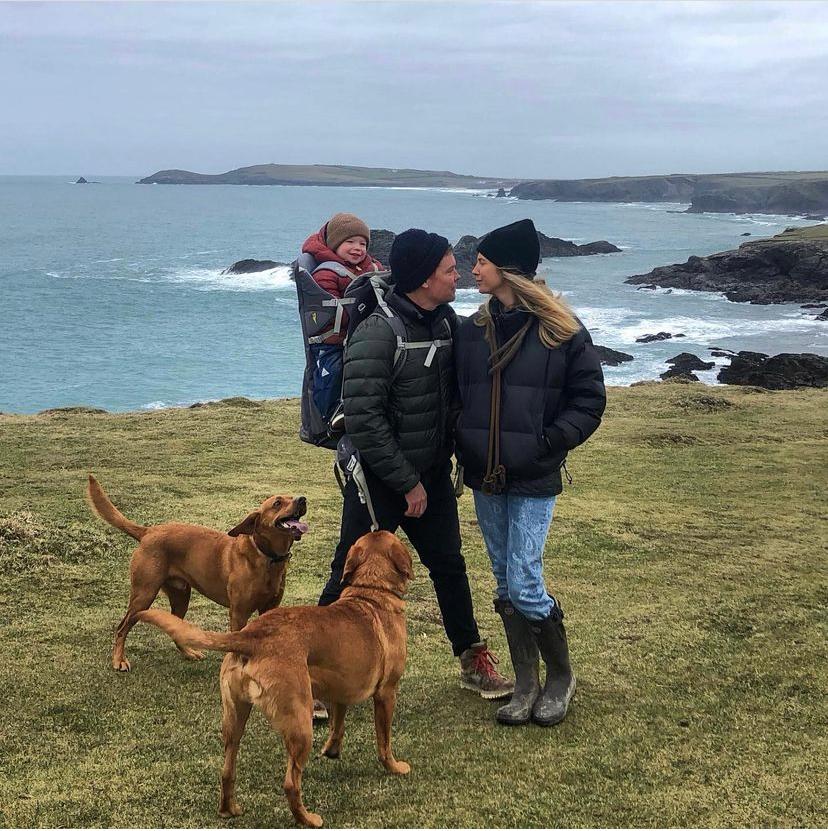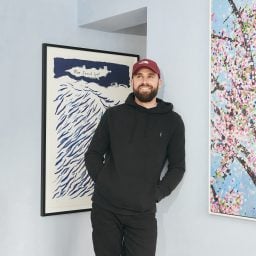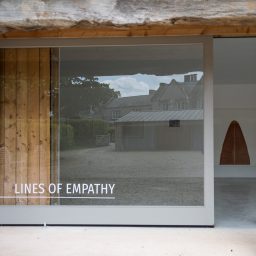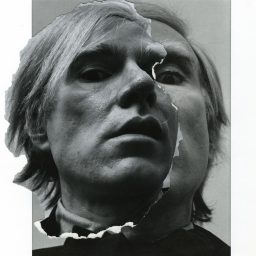Founded in 2010, the Drang Gallery has come to be recognized as a bastion of contemporary art in the southwest region of the United Kingdom. With four gallery locations—in Padstow, Rock, Salcombe, and Burford—and helmed by Justin Easton and his wife Tess Young-Jamieson, the gallery has built its reputation largely from its collaborations and close relationships with leading artists, their studios, and publishers, allowing for a dynamic and cutting-edge exhibition program and roster of both original and editioned works. Of particular note is the gallery’s relationship with the studio and work of Damien Hirst, with whom they have been working since the gallery’s inception.
We caught up with Easton to learn more about what first inspired him to found the Drang Gallery, its collection of works by Hirst, and what’s next for the gallery’s exhibition program.
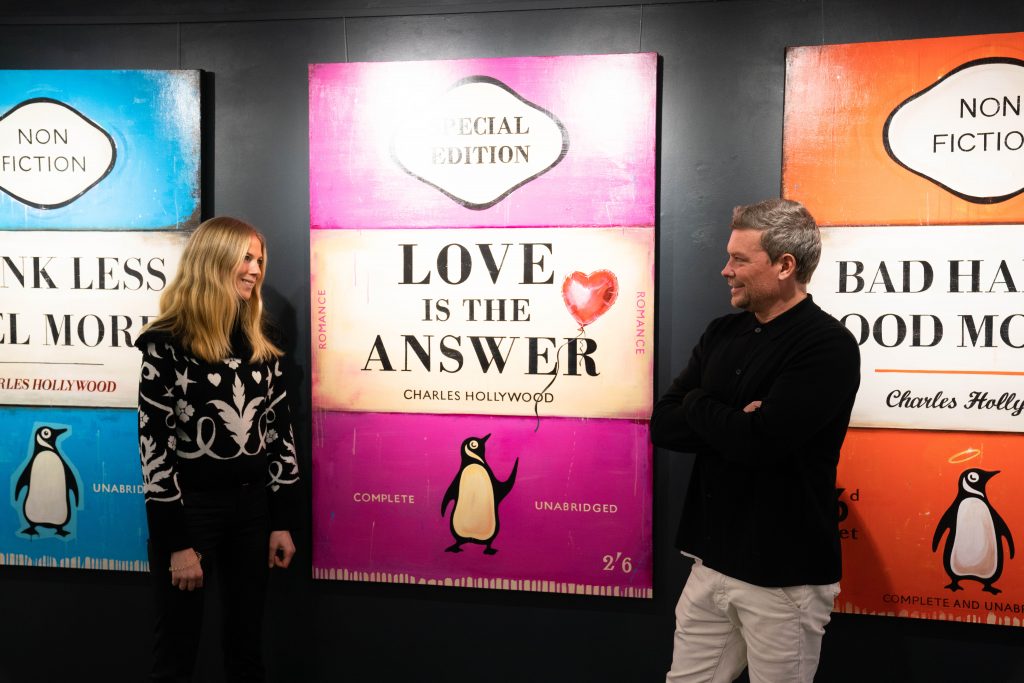
Justin Easton and Tess Young-Jamieson. Courtesy of the Drang Gallery.
Can you tell us a bit about the history and background of the Drang Gallery?
Having travelled extensively for much of my life and working in teaching for a number of years, I decided to return to the U.K. on the condition that I could live by the sea and have the lifestyle I wanted. Unsure how to achieve this rather ambitious goal at 27 years old, I consulted my parents who instantly discouraged me from teaching (having been teachers for much of their lives), as it seemed my mother was having a great deal of success with what was supposed to be her retirement project: an art gallery in the seaside town of Ilfracombe. We as a family had been brought up surrounded by art and assisting with exhibitions and preparation of paintings.
I didn’t need much encouragement to move to Cornwall and open my first gallery in Newquay in 2004, which exhibited many local artists, seascapes, and surf art. I recall contacting all the international artists who had established themselves through the culture of surfing, inviting them to exhibit with us in this relatively young-yet-exploding surfing epicenter of Cornwall. Several responded, and I had the pleasure to work and build relationships with the likes of John Severson, Ozzy Wright, and Wolfgang Bloch.
Several openings, closures, and relocations later, the Drang Gallery Ltd. opened its doors in 2010 on Padstow seafront and was followed by subsequent spaces in Salcombe (South Devon), Rock (Cornwall), and Burford (the Cotswolds).
Tess and I met in 2016 when she was working in the art market in the Cotswolds—with a great deal of success! I had studied at Christie’s some years earlier and she had just enrolled on a six-month course with Sotheby’s so everything was aligning for us it seemed. We fell in love and I knew instantly, with her drive, taste, and eye for detail, that I wanted her involved in the Drang. With some convincing on my part, she climbed onboard and together we grew the business further, opening the spaces in Rock, and more recently Burford.
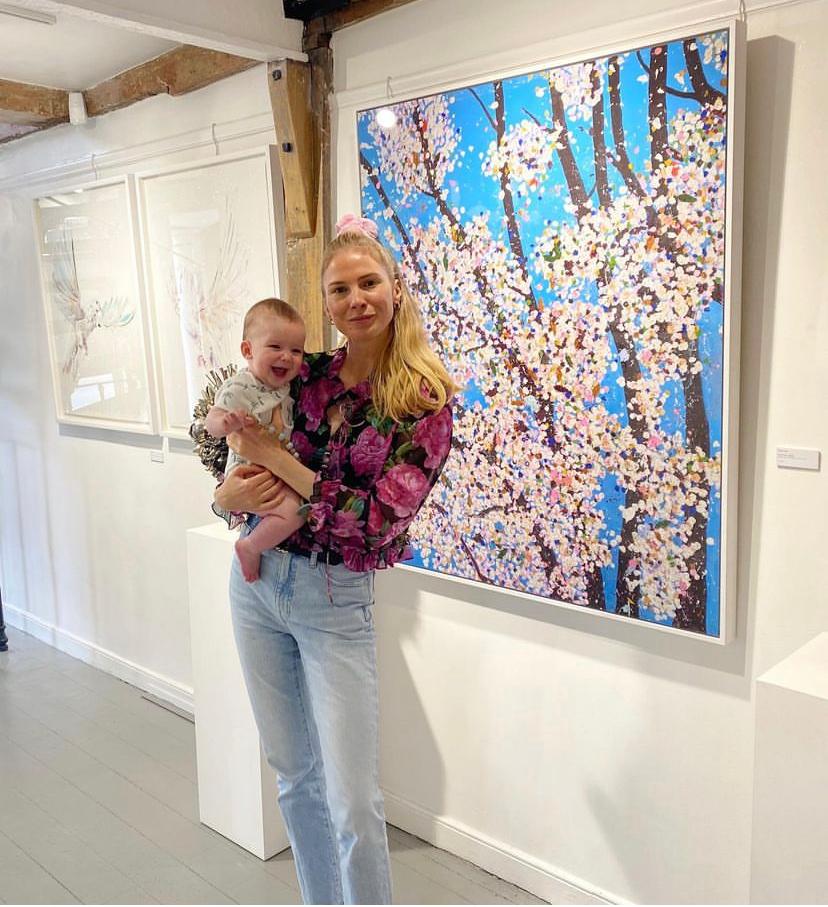
Tess Young-Jamieson with her son in front of Damien Hirst, The Virtues – Justice (2021). Courtesy of the Drang Gallery.
How do your approaches as gallery directors differ or align?
I must be very careful what I say here—working with one’s spouse comes with certain challenges, and it certainly isn’t straightforward, especially when you throw a baby into the mix! Fortunately for us, Tess brings a wonderful eye to the business, handling much of the creative and marketing elements, while I deal with the logistics and business needs, so together we make quite a good team. One crucial aspect we agree on is what we perceive the business to be and the direction in which we intend to go—the essentials for growth and success.
With four gallery locations across South West England, does the locality influence or inform the Drang Gallery’s program? In what ways?
Certainly, when we started out, the gallery was influenced heavily by locality, well-versed and represented subjects, our own passions and market demand. However, having branched from an existing gallery business in the southwest, the one thing I wanted to achieve with Drang from the very beginning was a very simple goal: for the Drang to stand apart from the numerous art galleries of Cornwall and Devon, by not showcasing your typical seascape/harbor scene/landscape paintings, but rather to bring something new, fresh, and exciting to this part of the U.K.
Working with established and emerging artists, publishers, studios, and galleries in London and internationally, the Drang quickly built a reputation for dealing in material that had value, often a proven secondary market, and widespread recognition and appeal. We were not limiting ourselves to what we felt the market wanted, rather what we felt it needed.
Since its opening, what are some of the biggest lessons either of you have learned?
Location, location, location. Having opened and closed spaces in numerous locations, we have learnt the hard way that the road to success needs to be not only well-trodden, but by a very particular type of person. I firmly believe a lot of the success we have had is down to risk-taking; as my grandmother used to say, “you have to speculate to accumulate,” and certainly a lot of speculation has occurred over the last two decades. Taking chances, risks, and believing in oneself has been paramount in the growth and development of the business.
Working in the art industry has been hugely rewarding, not only by its very nature, which is challenging, captivating, and engaging, but the people you work with and the environment you work in. We both feel very grateful to not only be doing what we do, but where we are doing it from, and why. We work with some great artists and wonderful material—from beautiful locations to appreciative clients.
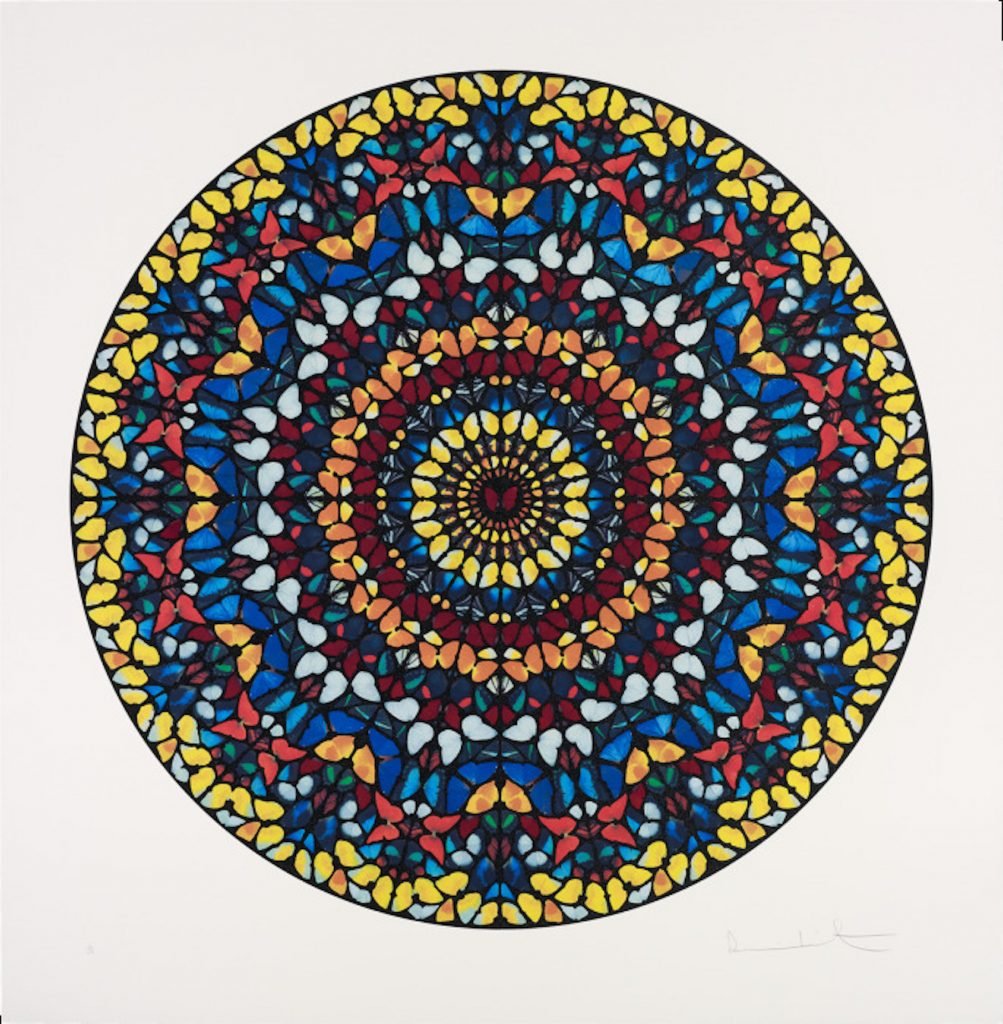
Damien Hirst, Entreaty (2013). Courtesy of the Drang Gallery.
The gallery has a significant collection of works by Damien Hirst. What initially drew this focus?
My parents were based in Ilfracombe during the period in which Damien invested heavily in the area. They knew him and appreciated his contributions to the town: a restaurant, a shop, his plans to build a school, and various other enterprises that in turn brought a lot of belief and support to the region. In 2010, when I approached Other Criteria with the concept of offering Damien’s editions in Padstow through the Drang, they thought it a wonderful idea and fully supported us. We quickly became the largest account for O.C. in the U.K., and built a reputation for our open, honest, and welcoming gallery ethos and customer service.
I recall the first time I acquired a beautiful Diamond Dusted Psalm edition and placed it proudly in the window of the gallery with a price tag of £5,000. This was a defining moment as many locals would comment, “you’ll never sell anything other than fish and chips and pasties along here.” Of course, the Butterfly Psalm did not sit in the window long and today, the same piece fetches over £30,000 at auction. It certainly felt groundbreaking to be selling blue-chip artists out of a small fishing village in Cornwall, and an even smaller sailing community in Salcombe, South Devon.
I cannot express how valuable working with key artists and studios during those early years was to the rise and success of the business; I am eternally grateful for their support. Working with the studios of Other Criteria, Paul Stolper, CCA Galleries, Marc Quinn, and Counter Editions really helped us become more established and recognized.

Damien Hirst,
All You Need Is Love, Love, Love (Diamond Dust) (2009). Courtesy of the Drang Gallery.
Out of all the Damien Hirst works within the gallery’s collection, do either of you have a personal favorite? Or, alternatively, one that you consider the most significant?
Having dealt in Damien’s editions since 2010, we have seen a lot come and go. Of course, there are ones I wish I’d kept! In particular, his big beautiful butterfly mandala paintings have always mesmerized me, and the original print versions no less so; works such as Entreaty, Covenant, All You Need Is Love, Love, Love. Larger than life, bright and beautiful, yet so simple and clean, in perfect balance and symmetry. I think the appeal of these subjects will be everlasting, as they have since classical civilization.
Are there any forthcoming exhibitions or is there any gallery news that you can share with us?
We are currently preparing to exhibit at Henley Festival at the beginning of July. We’ve attended a few years now and it’s always a really great experience for all involved!
The next in-house exhibition on our events calendar is a solo show of Jack Davis original paintings. Although the Drang Gallery isn’t known for representing regional seascape artists, Davis is definitely the exception. His incredible talent at capturing our famous Cornish light, the almost abstract ever-changing seas and skies, really is outstanding. We’ve had great success with his collections, both in our galleries across the southwest and in London where his work was a firm favorite on our stand at the London Art Fair. Davis’s exhibition “Trail Of Light” will be on display in our Salcombe gallery the final two weeks of July.
Learn more about the Drang Gallery here.
